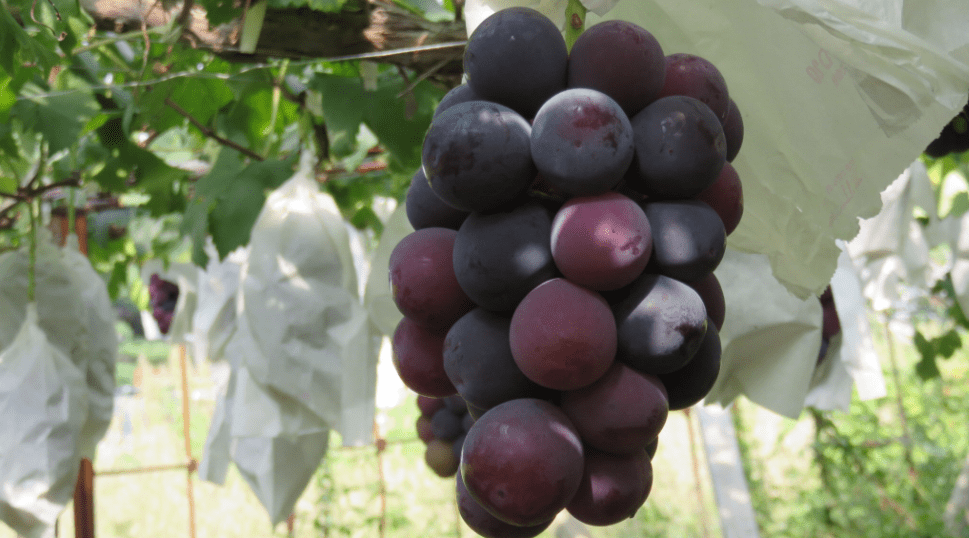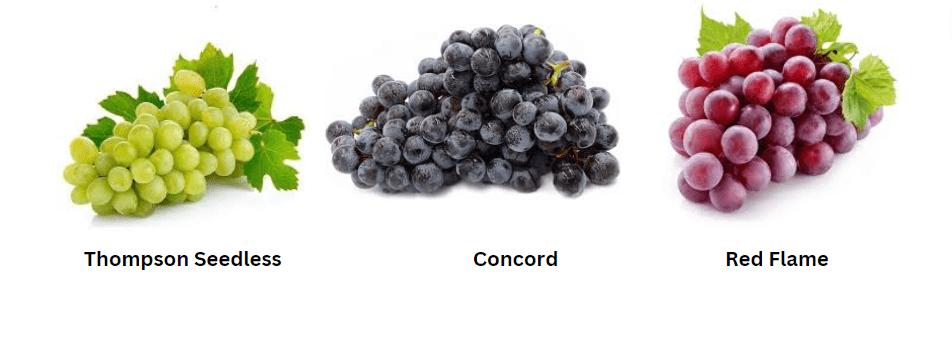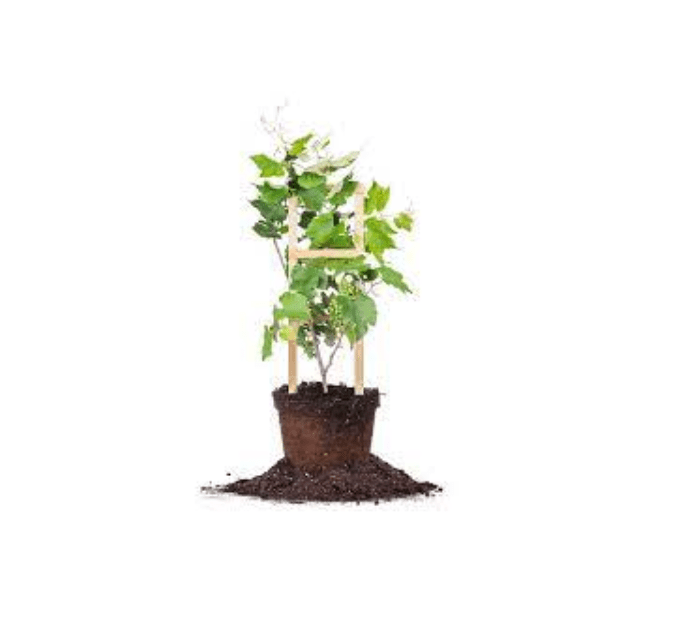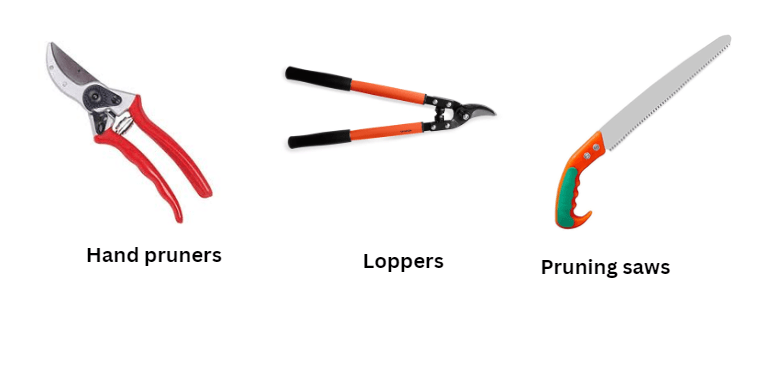
Table Grapes: Planting, Pruning, and Harvesting Guide
Table grapes are a delicious and popular fruit that can be grown in your own backyard. Whether you’re a beginner or an experienced gardener, this comprehensive guide will provide you with detailed instructions on how to plant, prune, and harvest table grapes for a successful and bountiful harvest. From choosing the right variety to caring for your grapevines throughout the growing season, this article will give you all the information you need to grow your own delicious table grapes. So, let’s dive in and learn how to grow and enjoy your own homegrown table grapes!
Table of Contents
ToggleChoosing the Right Variety
A. Popular Table Grape Varieties
When it comes to choosing the right variety of table grapes to plant in your garden, there are a few factors to consider. Some popular varieties include Thompson Seedless, Concord, and Red Flame. Each variety has its own unique flavor, texture, and growing requirements, so it’s important to choose one that will thrive in your specific climate and soil conditions.

B. Factors to Consider
When choosing a variety of table grapes to grow, it’s important to consider factors such as your climate, soil conditions, and personal taste preferences. Some varieties may do better in warmer climates, while others may be more suited to cooler regions. Additionally, certain varieties may have specific soil requirements, so it’s important to consider whether your soil is well-draining and fertile. Finally, think about the flavors and textures you enjoy in table grapes, as each variety has its own unique characteristics. By considering these factors, you can select the right variety of table grapes that will thrive in your garden and provide you with delicious homegrown fruit.
Planting Table Grapes
A. Site Selection
When selecting a site for planting table grapes, it’s important to consider factors such as sunlight, air circulation, and protection from strong winds. Table grapes thrive in full sunlight, so it’s important to choose a location that receives at least 6-8 hours of direct sunlight per day. Good air circulation is also important for preventing diseases, so avoid planting in areas with heavy tree cover or structures that block airflow. Additionally, consider planting in a location that is protected from strong winds, as this can damage the vines and reduce fruit production. By carefully selecting a suitable site for planting, you can help ensure the success of your table grape vines.
B. Preparing the Soil
When preparing the soil for planting table grapes, it’s important to ensure that it is well-drained and fertile. Soil with good drainage will prevent waterlogging, which can be detrimental to the health of the vines. Table grapes also prefer a slightly acidic to neutral pH, so it’s recommended to have the soil tested and make any necessary adjustments. Adding organic matter, such as compost or well-rotted manure, can improve soil fertility and structure, providing essential nutrients for the grapevines. It’s also important to remove any existing vegetation and weeds from the planting area to reduce competition for nutrients and water. By properly preparing the soil, you can create an optimal growing environment for table grapes.
C. Planting Process
The planting process for table grapes involves selecting a suitable location with plenty of sunlight and good air circulation. It’s important to space the grapevines according to the specific variety being planted, typically around 6-8 feet apart in rows and 8-10 feet between rows. Before planting, the grapevines should be pruned to encourage strong root and shoot growth. When planting, make sure the roots are spread out and placed at the proper depth, then backfill the hole with soil and water thoroughly. Providing support for the grapevines, such as a trellis or arbor, is necessary to help them grow upward and keep the fruit off the ground. Finally, adding a layer of mulch around the base of the vines can help retain moisture, suppress weeds, and regulate soil temperature. By following these steps, you can ensure a successful planting process for table grapes.

Pruning Table Grapes
A. Why Pruning is Essential
Pruning is essential for table grapes because it encourages strong root and shoot growth, which ultimately leads to healthier and more productive grapevines. It also helps to shape and train the vines, allowing for better air circulation and sunlight exposure, leading to improved fruit quality. Additionally, pruning helps to manage the vine’s overall size and shape, making it easier to care for and harvest the grapes.
B. Types of Pruning
There are two main types of pruning for table grapes: 1. Cane pruning, 2. Spur pruning
1. Cane pruning
Cane pruning is a common method used for table grapes, where the previous year’s growth is selected and trained along a wire to form the main fruiting canes. These canes are then pruned back to a specific number of buds to ensure optimal fruit production.
2. Spur pruning
Spur pruning involves selecting and maintaining a permanent framework of spurs on the grapevine, from which new shoots and fruiting canes will develop each year. This method is often used for more vigorous grape varieties and allows for easier management of the vine.
C. Pruning Techniques
1. Tools needed
Tools needed for pruning table grapes include hand pruners, loppers, and pruning saws. It’s important to use sharp, clean tools to make precise cuts and minimize the risk of disease. Additionally, it’s important to wear protective gloves and eyewear while pruning to prevent injury.

2. Step-by-step pruning instructions
Step 1: Start by removing any dead or diseased wood from the grapevine using hand pruners or loppers.
Step 2: Identify and select the permanent spurs on the grapevine, usually located close to the main trunk or cordons.
Step 3: Use the pruning saw to carefully remove any excess spurs or wood that is not needed for the permanent framework.
Step 4: Once the permanent framework of spurs is established, prune back the new growth each year, leaving a few buds on each spur to promote new shoots and fruiting canes.
Step 5: Remove any shoots or canes that are not needed for the desired vine structure, and continue to maintain the permanent spurs for future growth and fruit production.
Following these step-by-step instructions will help ensure the successful spur pruning of grapevines.
D. Timing for Pruning
It is best to prune grape vines during the dormant season, ideally in late winter or early spring before new growth begins. This allows the vine to focus its energy on developing new shoots and fruit rather than healing pruning wounds.
Training and Supporting the Vines
A. Trellis Systems
Trellis systems are essential for supporting the growth of grapevines and maintaining their structure. There are various types of trellis systems, including the vertical shoot positioning (VSP) system and the high-wire cordon system. These systems help to train the vines, improve air circulation, and provide support for the grape clusters. It is important to choose a trellis system that is suitable for the specific grape variety and growing conditions. Properly trained and supported vines will result in healthier growth and better fruit production.
B. Training Young Vines
Training young vines is a crucial step in establishing a strong and healthy vineyard. It involves shaping the vine’s growth by training the main trunk and establishing a framework for the vine to grow on. This can be achieved through techniques such as tying, pruning, and positioning the shoots in the desired direction. Training young vines helps to promote proper vine growth, ensure even distribution of sunlight and airflow, and ultimately improve grape quality and yield. It is important to start training young vines early in their growth to set the foundation for successful vine development.
Caring for Table Grapes
A. Watering Guidelines
Watering table grapes is an essential part of their care and maintenance. It is important to provide consistent and adequate water to ensure healthy growth and fruit production. Table grapes generally require regular watering, especially during the growing season and when they are fruiting. It is important to water deeply, ensuring that the roots are receiving enough moisture without over-soaking the soil. Mulching around the base of the grapevines can also help retain soil moisture and reduce the need for frequent watering. Additionally, monitoring the weather and adjusting watering frequency accordingly can help prevent over or under-watering. Overall, it is important to establish a regular watering schedule and pay attention to the specific needs of the table grape variety being grown.
B. Fertilization
Fertilization is another important aspect of caring for table grapes. It is important to provide the necessary nutrients to support healthy growth and fruit production. Fertilizing table grapes in early spring, before new growth begins, and again in early summer can help ensure the vines have the nutrients they need. It is important to use a balanced fertilizer that is specifically formulated for fruit-bearing plants. Additionally, soil testing can help determine any deficiencies in nutrients and guide fertilization practices. Overall, proper fertilization can help promote strong, healthy vines and quality fruit.
C. Pest and Disease Management
Pest and disease management is crucial in caring for table grapes. It’s important to regularly monitor the vines for any signs of pests or diseases and take appropriate measures to control them. This can include using natural predators, applying organic pesticides, or practicing cultural methods such as proper pruning and spacing to minimize the risk of infestations. Additionally, maintaining good air circulation and ensuring proper drainage can help prevent the development of certain diseases. It’s also important to stay informed about common pests and diseases in your specific growing region and take proactive measures to prevent them. By properly managing pests and diseases, you can help maintain the health and productivity of your table grape vines.

Harvesting Table Grapes
A. Determining Ripeness
Harvesting table grapes at the right time is crucial in order to ensure the best flavor and quality. There are a few methods to determine the ripeness of the grapes. One way is to check the color – the grapes should be evenly colored and have a slight bloom on the surface. You can also taste a few grapes to check for sweetness and flavor. Additionally, gently squeezing the grapes to see if they are firm but yield slightly to pressure can also indicate that they are ready to be harvested. It’s important to handle the grapes carefully during harvesting to avoid damaging the vines and prevent bruising. By harvesting at the right time, you can enjoy the best tasting table grapes.
B. Post-Harvest Care
After harvesting, it’s important to handle the grapes with care to maintain their quality. Grapes should be stored in a cool environment to slow down the ripening process and prevent decay. It’s also important to remove any damaged or spoiled grapes to prevent them from affecting the rest of the batch. Additionally, grapes should be stored in a single layer to prevent crushing and bruising. Proper post-harvest care will help extend the shelf life of the grapes and ensure they remain fresh and delicious for as long as possible.
Common Issues and Troubleshooting
A. Identifying Problems
After harvesting, it’s important to closely monitor the grapes for any signs of decay or spoilage. Some common issues that may arise include mold growth, shriveling, and off flavors. To troubleshoot these issues, it’s important to inspect the grapes regularly and remove any damaged or spoiled ones. Mold growth can be addressed by improving air circulation and reducing moisture levels in the storage area. Shriveling may be a result of dehydration, so it’s important to maintain proper humidity levels. Off flavors can be a sign of microbial contamination, so it’s important to maintain clean and sanitary storage conditions. By addressing these common issues and troubleshooting as they arise, you can help preserve the quality of the grapes during post-harvest care.
B. Solutions and Remedies
- Regular inspection: Inspect the grapes regularly and remove any damaged or spoiled ones to prevent the spread of mold and decay.
- Improving air circulation: Ensure proper air circulation in the storage area to reduce the risk of mold growth. This can be achieved by using fans or adjusting the ventilation system.
- Reducing moisture levels: Address any sources of excess moisture in the storage area, such as leaks or high humidity, to prevent mold growth.
- Maintaining proper humidity levels: Use a humidifier or dehumidifier to maintain the appropriate level of humidity to prevent shriveling or dehydration of the grapes.
- Sanitary storage conditions: Clean and sanitize the storage area regularly to prevent microbial contamination and off flavors in the grapes.
By implementing these solutions and remedies, you can help preserve the quality of the grapes during postharvest care and ensure a successful storage and preservation process.
In conclusion, growing table grapes can be a rewarding and enjoyable experience, but it requires careful planning and attention to detail. By following the steps outlined in this guide, you can ensure a successful harvest of delicious, juicy grapes. Remember to provide the right growing conditions, prune the vines at the right time, and harvest the grapes when they are ripe. With a little bit of effort and know-how, you can enjoy a bountiful supply of fresh, home-grown grapes.
Frequently Asked Questions (FAQs)
The best time to plant table grapes is in the early spring, after the last frost has passed. This will give the vines time to establish themselves before the growing season.
Pruning is important for maintaining the health and productivity of your grape vines. You should prune in the late winter or early spring, before the vines start to grow. Remove any dead or diseased wood, as well as any excessive growth, to encourage fruit production.
Table grapes are typically ready to harvest in late summer to early fall, depending on the variety. Grapes should be harvested when they are fully ripe and have developed their full flavor and sweetness.
During the growing season, it’s important to provide your grape vines with regular watering, especially during dry periods. You should also monitor for pests and diseases and take appropriate measures to control them.
Yes, table grapes can be grown in containers, as long as the container is large enough to accommodate the root system of the vine. Make sure the container has good drainage and provide support for the vine to climb.
Table grapes prefer well-drained soil with a slightly acidic pH. Adding organic matter, such as compost, can help improve the soil structure and fertility for grape vines.
Table grape vines thrive in full sunlight, so it’s important to plant them in a location that receives at least 6-8 hours of direct sunlight per day.
Yes, you can grow different varieties of table grapes together, as long as they are compatible in terms of their growth habits and requirements. This can provide a variety of flavors and colors for your grape harvest
